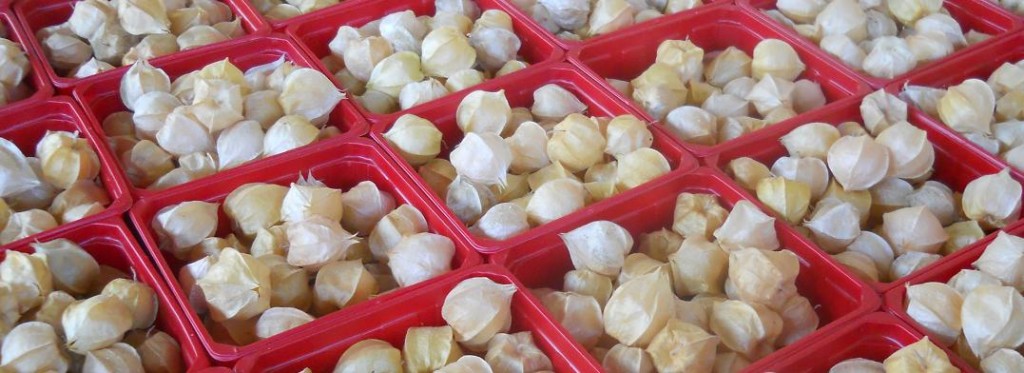 Alkékenge or more poetically amour en cage in French, bladder cherry from its Latin root – physalis, Chinese or Japanese lantern, winter cherry – there are countless names for the delicious ground cherry. Planted in the month of May, the plant reaches gigantic proportions in August, yielding large quantities of berries which are meticulously harvested week after week until the first frost. They are best laid out to dry in their husks for several days up to a few weeks before consumption. When they finally fill a dish, they can be deliciously addictive and notoriously difficult to share. Sweet but tart, the orange fruit of our comestible northern ground cherry (Physalis Pruinosa) differs from that of the more decorative Physalis Alkekengi. Strictly speaking, “alkékenge” denotes the ornamental Chinese lantern which belongs to the Alkekengi species and whose berries are wrapped in a bright orange husk. Botanists say the plant is of South American origin, more particularly Peruvian. The word alkékenge, which first appeared in XIVth-century France, is from the old French alqueqange or alcacange, in turn derived from the arabic Al-Kakendi, a physician and pharmaceutical authority to the Eastern Caliphate (western central Asia during the European Dark Ages). Be that as it may, the ground cherry is now grown worldwide, in regions where it is neither too cold (frost halts growth) nor too hot (despite its South American origins, the plant abhors excessive heat). We love eating the fruit fresh, but were recently offered a jar of amazing ground cherry jam…
Alkékenge or more poetically amour en cage in French, bladder cherry from its Latin root – physalis, Chinese or Japanese lantern, winter cherry – there are countless names for the delicious ground cherry. Planted in the month of May, the plant reaches gigantic proportions in August, yielding large quantities of berries which are meticulously harvested week after week until the first frost. They are best laid out to dry in their husks for several days up to a few weeks before consumption. When they finally fill a dish, they can be deliciously addictive and notoriously difficult to share. Sweet but tart, the orange fruit of our comestible northern ground cherry (Physalis Pruinosa) differs from that of the more decorative Physalis Alkekengi. Strictly speaking, “alkékenge” denotes the ornamental Chinese lantern which belongs to the Alkekengi species and whose berries are wrapped in a bright orange husk. Botanists say the plant is of South American origin, more particularly Peruvian. The word alkékenge, which first appeared in XIVth-century France, is from the old French alqueqange or alcacange, in turn derived from the arabic Al-Kakendi, a physician and pharmaceutical authority to the Eastern Caliphate (western central Asia during the European Dark Ages). Be that as it may, the ground cherry is now grown worldwide, in regions where it is neither too cold (frost halts growth) nor too hot (despite its South American origins, the plant abhors excessive heat). We love eating the fruit fresh, but were recently offered a jar of amazing ground cherry jam…

Close
Your organic farm in the Eastern Townships